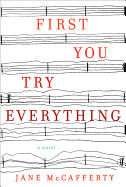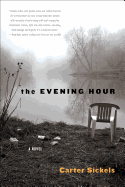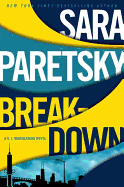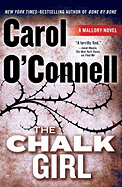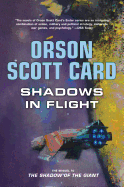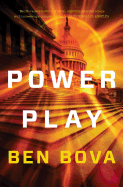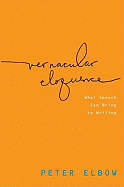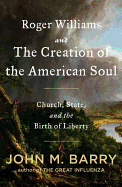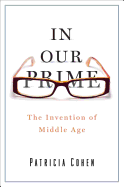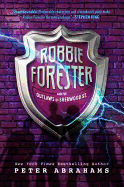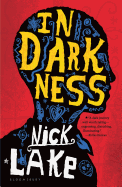Handselling
"Handselling." It's a word beloved by booksellers, because it's one of the things they do best--recommending books from a personal perspective. Publishers' reps use a variation: "This book is a good handsell." That means the book (usually) has a modest print run but is worthy of extra attention; with enough, it will break out of the pack, especially if it becomes an indie favorite, like Matterhorn, Mudbound, Water for Elephants, The Time Traveler's Wife, Shadow of the Wind....
There are many ways to handsell a book: via conversations, e-mails, social networks. A good friend e-mailed this to me about The Snow Child, a novel by Eowyn Ivey due out February 1: "What a stunning debut. It has the magic of Van Morrison's Astral Weeks, the poetic nuances of Sylvia Plath and Dylan Thomas, the wild spirit of Jack London, and the deep warmth of a single-malt Scotch. Most of all, it gave me the sense that despite a bleak world, magic can still appear when we least expect it and when we need it most.... I can't think of a more perfect novel to usher in the winter season with. It deserves to melt the hearts of many readers." How could I not immediately read it? I did, and he was right.
Nationally syndicated columnist and author Leonard Pitts, Jr., raised the bar for handselling in his January 15 editorial for the Miami Herald, "The New Jim Crow Alive and Thriving." He recommends Michelle Alexander's The New Jim Crow (now out in paperback from the New Press), which he called a "troubling and profoundly necessary" work. The book has an "explosive argument. Namely, that the so-called 'War on Drugs' amounts to a war on African-American men and, more to the point, to a racial caste system nearly as restrictive, oppressive and omnipresent as Jim Crow itself." Pitts believes in this book so much that he will send 50 readers a copy, purchased with his own money, if they promise to read it. That's all. That's a powerful handsell. --Marilyn Dahl, book review editor, Shelf Awareness



 The first thing we did before meeting Patricia Schultz for lunch was to see what she had to say about Seattle. As the author of 1,000 Places to See Before You Die, 2nd edition (Workman), she has the experience and the authority to stamp her imprimatur on a place. Score! We work in the area she wrote about--Pike Place Market--and we picked a restaurant she cited: Etta's. But, we wondered, does she really have the experience to be so definitive? We did some back-of-the-envelope calculations: 25 years as a travel journalist, 1,000 places, plus 200 more for the second edition (with no previous destinations deleted)....
The first thing we did before meeting Patricia Schultz for lunch was to see what she had to say about Seattle. As the author of 1,000 Places to See Before You Die, 2nd edition (Workman), she has the experience and the authority to stamp her imprimatur on a place. Score! We work in the area she wrote about--Pike Place Market--and we picked a restaurant she cited: Etta's. But, we wondered, does she really have the experience to be so definitive? We did some back-of-the-envelope calculations: 25 years as a travel journalist, 1,000 places, plus 200 more for the second edition (with no previous destinations deleted).... Schultz generally doesn't visit the same place twice, but she is dogged about finding the finest of any site. She thoroughly researches a spot before she travels, and then talks to everyone she can collar there about what to see and do, from taxi drivers to waiters to people on the street. One place she returns to again and again is Italy; indeed, the book devotes 50 pages to that country (compared to France's 38). She quotes Robert Browning: "Open my heart and you will see, engraved inside of it, 'Italy.' " (She noted that some countries actually count the number of pages they get, and the tourism authorities will ask her why they only got two pages to their neighbor's three.)
Schultz generally doesn't visit the same place twice, but she is dogged about finding the finest of any site. She thoroughly researches a spot before she travels, and then talks to everyone she can collar there about what to see and do, from taxi drivers to waiters to people on the street. One place she returns to again and again is Italy; indeed, the book devotes 50 pages to that country (compared to France's 38). She quotes Robert Browning: "Open my heart and you will see, engraved inside of it, 'Italy.' " (She noted that some countries actually count the number of pages they get, and the tourism authorities will ask her why they only got two pages to their neighbor's three.) Extremely Loud and Incredibly Close, based on the novel by Jonathan Safran Foer, opens nationally today. Tom Hanks, Sandra Bullock, John Goodman, Max von Sydow, James Gandolfini and Thomas Horn star in this story of a nine-year-old searching New York for the lock opened by a key belonging to his father, who died on 9/11. A movie tie-in edition is available from Mariner ($14.95, 9780547735023).
Extremely Loud and Incredibly Close, based on the novel by Jonathan Safran Foer, opens nationally today. Tom Hanks, Sandra Bullock, John Goodman, Max von Sydow, James Gandolfini and Thomas Horn star in this story of a nine-year-old searching New York for the lock opened by a key belonging to his father, who died on 9/11. A movie tie-in edition is available from Mariner ($14.95, 9780547735023). Coriolanus, a modern reimagining of Shakespeare's play, opens today, too. Ralph Fiennes directs and stars as the title character, a Roman soldier banished from the city for his extreme political views. Also stars Gerard Butler, Brian Cox and Jessica Chastain. The official companion is Coriolanus: The Shooting Script (Newmarket Press for It Books, $19.95, 9780062202574), which includes the screenplay, a foreword by Fiennes, introduction and scene notes by screenwriter John Logan and 21 film stills and behind-the-scenes photos.
Coriolanus, a modern reimagining of Shakespeare's play, opens today, too. Ralph Fiennes directs and stars as the title character, a Roman soldier banished from the city for his extreme political views. Also stars Gerard Butler, Brian Cox and Jessica Chastain. The official companion is Coriolanus: The Shooting Script (Newmarket Press for It Books, $19.95, 9780062202574), which includes the screenplay, a foreword by Fiennes, introduction and scene notes by screenwriter John Logan and 21 film stills and behind-the-scenes photos.
